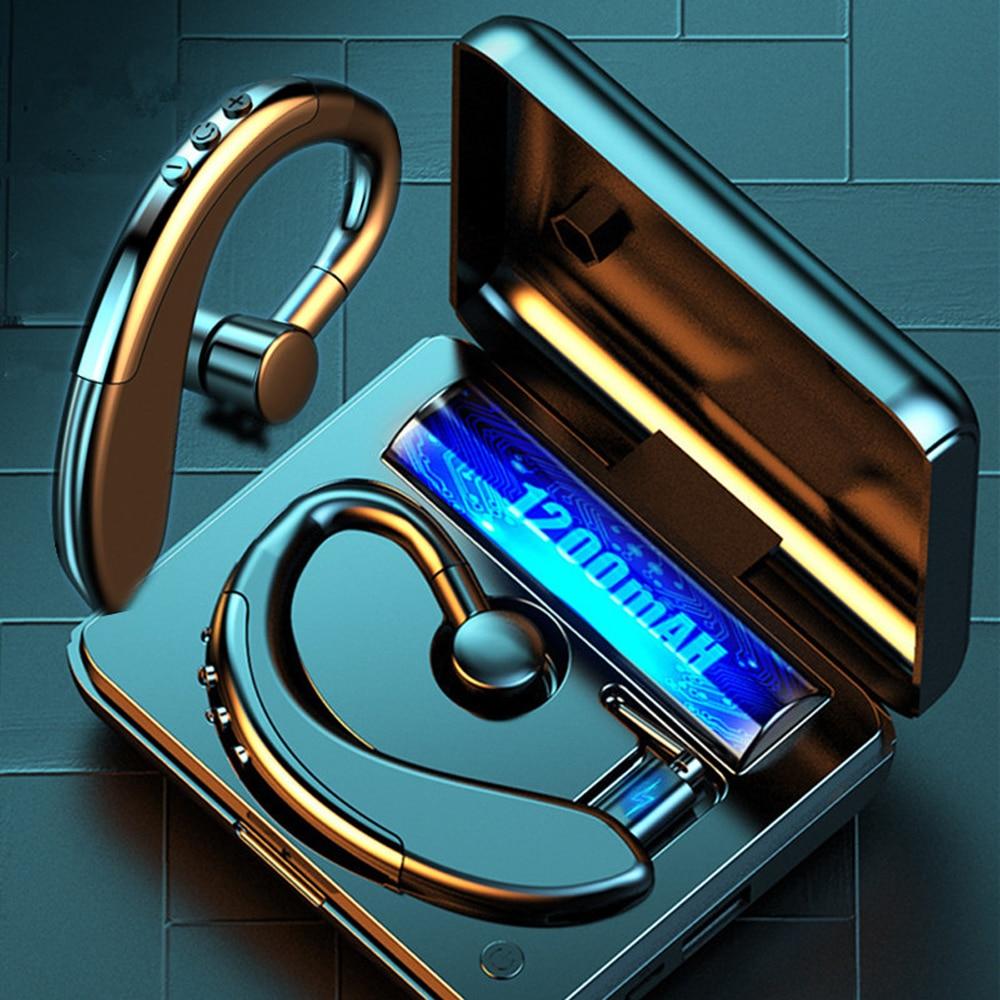control systems and the corresponding MATLAB simulation results for the system transient response are presented in Sections 6.3 and 6.5. Steady-state response: the nature of the response after it has reached steady-state 3. 1. Ans A frequency response is the steady state response of a system when the input to the system is a sinusoidal signal. Then it is examined using final value theorem. Practically, it would be (For system. A system analysis of the respiratory regulator is presented which allows to predict the steady state values of the alveolar ventilation and the pH in the extracellular fluid of the brain in respiratory and metabolic acidosis or alkalosis and during increase or decrease of CO 2 production. a. The transient response does not depend on the source i.e. 10 and 0.8. The purpose of control system for a plan is to improve the following characteristics of the system . 2. | Meaning, pronunciation, translations and examples The response of control system in time domain is shown in the following figure. Effect of feedback on the plant is to. Video. Control engineers are interested in having steady state responses as close as possible to the desired ones so that we define the so-calledsteady state errors, which represent the differences at steady state of the actual and desired system responses (outputs). Transfer function of a system can used to study its. Transient response specification of second order system. s =0 changes the total angular contributions to A so that the 180° condition is no . For a step input, the percentage overshoot (PO) is the maximum value minus the step value divided by the step value. Compensator MCQ. For example if we have this system G(S)= 1/ s+1 , then closed loop DC gain(put s=0) of this system with unity feedback is 0.5. Type 1 system with step, ramp and parabolic input in control system. c (t) = 12.5 e -6t sin 8t, t ≥ 0. Control System. Frequency response of the system is defined as the response of the system when standard sinusoidal signals are applied to it with constant amplitude over a range of frequencies. Classical examples for Also Know, what causes overshoot? The steady state analysis depends upon the type of the system. As the system approaches steady state, the response approaches a constant value. The terms Steady State or Transient State is defined not only for electrical systems, but for many other physical systems also. Impulse response c. Steady state response d. All of the above. Control Systems Multiple Choice Questions on "Steady State Error". It is analyzed by using different test signals like step, ramp or parabolic. Thre. The primary purpose of the time response analysis is to evaluate the system's performance with respect to time. Answer (1 of 4): Strictly speaking, the response time is the time that the control system WOULD TAKE to reach its steady state value IF it maintains the initial rate of change (after delay time). Lead Compensator: It is used for improving the transient state or speed response of the system. The effect of the circuit upon the input sinusoid is on its magnitude and phase and it depends on . In control systems, a transient response (which is also known as a natural response) is the system response to any variation from a steady state or an equilibrium position. Steady state response (i . For an LTI system in frequency domain, Y(s) = H(s)X(s), where symbols have their usual meanings. If the problem you are trying to solve also has initial conditions you need to include a zero input response in order to obtain the complete response . d) All of the above . But, addition of a gain in the open loop will . In this section a. 5. • However, steady-state errors can get worse. The order of the system can be obtained from the transfer function of the given system. Transient response: the nature of the system's response while it is changing 2. Answer (1 of 3): It could mean two things. Interpretation of poles and the corresponding transient response of the system in the time domain . First order LTI systems are characterized by the differential equation + = where τ represents the exponential decay constant and V is a function of time t = (). Hence there is a need for studying the time response of the system. Settling Time: ts is defined as the time required for the The 'natural response' of such a system to stimulus is an initial delay followed by an exponential approach to a new steady state. • Physically, a zero adds derivative control to the system, introducing anticipation into the system, speeding up transient response. After reading this topic Type 0 system with step, ramp and parabolic input in the… So, the step signal is widely used in the time domain for analyzing the control systems from their responses. (transient response) •ii) the output is almost constant. In such method frequency of the input signal is to be varied over a certain range and the resulting response of system is to be studied. Control System. So, the speed or frequency will be essentially independent of any changes in a power output of the generator ie, ∆F(s) =0 . b) Ramp signal. Force c. Velocity d. At time t = 0, the position x [m] of the mass is 0.4 m.After being released it begins to oscillate around the equilibrium value, 0 m, with smaller and smaller amplitudes.Due to the damping coefficient, after a while, it will stabilise at 0 m (the equilibrium position).. The brain extracellular fluid pH is considered as the controlled value and the mechanical system . forcing function, applied. b) The steady state analysis depends on type of the system. Compensators in control system are used to improve the performance specifications, i.e. The steady state error for a unity feedback system for the input r(t) to the system Answer (1 of 2): A proportional gain will affect the DC gain of a the system. It depends upon both the dynamics of the system and the input quantity. Transient Response: The value of current and voltage during the time change is called transient response. The time-response graph is shown below: It comprises of two parts, transient part and the steady state part. Rise Time: tr is the time the process output takes to first reach the new steady-state value. As defined earlier, time response is the response of control system as a function of time. 5. Now the transient state response of control system gives a clear description of how the system functions during transient state and . a) Type of the system is obtained from open loop transfer function. 1. Time to First Peak: tp is the time required for the output to reach its first maximum value. Type 0 system with step, ramp and parabolic input in control system. Response of 2nd Order Systems to Step Input ( 0 < ζ< 1) 1. 3. The frequency response indicates the steady-state response of a system to a sinusoidal input. Key De nitions: 1 Max Overshoot (M p) M p= c max c ss c ss c max: max value of c(t), c ss: steady-state value of c(t) %max overshoot = 100 M p M pdetermines relative stability: Large M p ()less stable 2 Delay time (t d):Time for c(t) to reach 50% of its nal value. The order of a system is the order of the differential equation governing the system. Rise Time. The type of the system is determined from open loop transfer function G (S).H (S) Transient Time: The time required to change from one state to another is called the transient time. The stability of a control system is defined as the ability of any system to provide a bounded output when a bounded input is applied to it. It is an internal property of the system itself. 3 Rise time (t r):Time for c(t) to rise from 10% to 90% . The examples of transient responses are step and impulse responses which occur due to a step and an impulse input respectively. a) 3. b) 2. c) 1 . Consider the following statements regarding compensators used in control systems: For type-2 or higher systems, lag compensator is universally used to overcome the undesirable oscillatory transient response. For underdamped system, the Rise time (0-100% rise time) is useful, For overdamped systems, the the Peak time is not defined, and the (10-90 % rise time) is normally used Peak time: Steady-state error: Settling time: Percent of Overshoot: is the peak value is the final value of the response Tp Tr T p 100 % fv M fv P.O. However, a transient state is essentially the time between the beginning of the event and the steady state. Reference input 'R s ' is a unit step input.. 3. Previously the circuit is switched off. I am confused in what this represents, i.e., is it true only in steady state (in other words is it only the forced response) or is it true for all times including the transient time (forced plus the natural response). c) Unit step signal. The stability of a control system is defined as the ability of any system to provide a bounded output when a bounded input is applied to it. The responses corresponding to these states are known as transient and steady state responses. Initial conditions are power off and heater at ambient temperature. transient response and the steady state response. "Unit step response" means that the forcing function (the step) has magnitude 1.0. The imaginary part is the damped oscillation frequency, and the real part is the damping constant. Time-Domain Analysis Analyzing Simple Controllers Transient Analysis-Cont. • The FRF can be used to find the steady-state response of a system to a sinusoidal input since, if e(t) y(t) G(s) and e(t) = sin2t, |G(2j)| = 0.3, G(2j) = −80 , then the steady-state output is y(t) = 0.3sin(2t − 80 ) ⇒ The FRF clearly shows the magnitude (and phase) of the re sponse of a system to sinusoidal input Luis Chaparro, in Signals and Systems Using MATLAB (Second Edition), 2015. Stability: this really comes before anything else At time t = 0, the position x [m] of the mass is 0.4 m.After being released it begins to oscillate around the equilibrium value, 0 m, with smaller and smaller amplitudes.Due to the damping coefficient, after a while, it will stabilise at 0 m (the equilibrium position).. Q10 - Transient response analysis is done for_____ systems. Steady state occurs after the system becomes settled and at the steady system starts working normally. Various steady-state values of System-1 are shown in Figure-4. b . The steady state response of a system for an input sinusoidal signal is known as the frequency response . Consider the following control system (system-1) as shown in Figure-3: Figure-3: Closed Loop Control System. In a design of control systems, we've to control the transient response to reduce the steady state error, which occurs due to undesirable transient response. c ( t) = c t r ( t) + c s s ( t) Where, c) Conditionally stable. The performance of the control system are expressed in terms of transient response to a unit step input because it is easy to generate initial condition basically are zero. Answer: The steady state response of a system to a purely sinusoidal input is defined as frequency response of a system. Liquid level with constant flow outlet Liquid level with constant flow outlet In most systems, this would become the dominant time constant. The generator is synchronized to a network of very large size. Transient Response FORESHADOWING: Transfer function at s = jω tells us response to a We can find the transient response by using Fourier integrals. In the case of the unit step, the overshoot is just the maximum value of the step response minus one. Therefore, in terms of a definition, a transient state is when a process variable or variables changes, but before the system reaches a steady state. All first order systems forced by a step function will have a response of this same shape. b) Stable. d) All of the mentioned. The steady state gain is a conversion factor that relates the input and the output at steady state. After reading this topic Type 1 system with step, ramp and parabolic input in the… ME 413 Systems Dynamics & Control Chapter 9: Frequency Domain Analyis of Dynamic Systems Systems d) Marginally stable. Improves steady state response but slows transient response Acts as low pass filter Decreases bandwidth System more tolerant to high frequency noise Clarification: The steady state value of a system is dependent on the transient response of the system since every system goes through a transient state before reaching the steady state. In this case, the poles are outside the unit circle and the system it thus unstable. The impulse response of a second-order underdamped system started from rest is given by. Time Response Analysis MCQ. Improving the steady-state error: simple integrator. - Frequency response is the steady-state response of a system to a sinusoidal input. Position b. The step response of a system in a given initial state consists of the time evolution of its outputs when its control inputs are Heaviside step functions.In electronic engineering and control theory, step response is the time behaviour of the outputs of a general system when its inputs change from zero to one in a very short time. when the response . More specifically, we can say, that stability allows the system to reach the steady-state and remain in that state for that particular input even after variation in the parameters of the system. It is purely natural response. The closed loop transfer function is 1/ s+2 . Steady-state response definition: A steady-state response is the behavior of a circuit after a long time when steady. 4. Chapter: Power System Operation and Control - Real Power Frequency Control LFC Control of Single Area and Derive the Steady State. These are used to control stop lights and traffic flow. Steady state response (i . Following are the common transient response characteristics: Delay Time. Improves steady state response but slows transient response Acts as low pass filter Decreases bandwidth System more tolerant to high frequency noise The purpose of control system for a plan is to improve the following characteristics of the system . ANSWER: (c) Steady state response. The general equation of a free response system has the differential equation in the form: Also, a steady state establishes after a specific time in your system. c) Transient state analysis depends on order of the system. What are the natural frequency and the damping factor of the system respectively? (steady state response) 6. Time response = Transient response + Steady state response Transient time response (Natural response) describes the behavior of the system in its first short time until arrives the steady state value and this response will be our study focus. Here, both the transient and the steady states are indicated in the figure. I am confused in what this represents, i.e., is it true only in steady state (in other words is it only the forced response) or is it true for all times including the transient time (forced plus the natural response). Q12 - The nature of transient response is revealed by _____ a) Sine wave. Mostly transient response is associated to on/off events. The characteristics and performance of the industrial control system are analysed by using the frequency response techniques. The response of a system can be partitioned into both the transient response and the steady state response. More usually, it would refer to the shape of an input pulse to the control system. C.4 Transient and Steady State Response Analysis 4.1 Introduction Many applications of control theory are to servomechanisms which are systems using the feedback principle designed so that the output will follow the input. 0.4.4 The Phasor Connection. ECE4510/ECE5510, FREQUENCY-RESPONSE ANALYSIS 8-3 Important LTI-system fact: If the input to an LTI system is a sinusoid, the "steady-state" output is a sinusoid of the same frequencybut different amplitude and phase. In an open loop system. 41. So that the total time response, Ct (t . In control theory, overshoot refers to an output exceeding its final, steady-state value. Useful Video Courses. 3. More specifically, we can say, that stability allows the system to reach the steady-state and remain in that state for that particular input even after variation in the parameters of the system. When a system tries to achieve a steady state, desired response of specific signal is achieved that can be theoretically sustained as time goes to infinity. The impulse response and step response are transient responses to a specific input (an impulse and a step, respectively). Step response b. For an LTI system in frequency domain, Y(s) = H(s)X(s), where symbols have their usual meanings. the time interval the system response is represented by its steady state component only. 4. In electrical engineering and mechanical engineering, a transient response is the response of a system to a change from an equilibrium or a steady state.The transient response is not necessarily tied to abrupt events but to any event that affects the equilibrium of the system. Control system- Time response Analysis. After reading this topic Unit ramp input time response of a first order control system,… C - Input/Output Functions After reading this input/output functions topic, you will understand its theory and examples also you… Chapter: Power System Operation and Control - Real Power Frequency Control LFC Control of Single Area and Derive the Steady State. Control System. The general equation of a free response system has the differential equation in the form: It might be referring to the signal from an actual ramp meter which counts the number of cars on a highway. Steady State Errors for Unity Feedback Systems Consider the following block diagram of closed loop control system, which is having unity negative feedback. The time response of a system may be considered in two . The response of a system (with all initial conditions equal to zero at t=0-, i.e., a zero state response) to the unit step input is called the unit step response. • In second plot: System is stable for all K . Q11 - Standard test signals in control system are: a) Impulse signal. In the case of the lag-lead compensator, a lag and a lead compensator are basically connected in parallel. The right-hand side is the forcing function f(t) describing an external driving function of time, which can be regarded as the system input, to which V(t) is the response, or system output.. The unit step response of a system with time constant 2.0 is shown in the figure. Think of a heater element supplied from a variable voltage source. Answer: A steady-state is an unchanging condition, that remains same after stimulus/change. • In first plot: System is stable only for small K,andoscillatesas poles approach imaginary axis. Continue this thread. What is an order of a system? N.B: the steady state gain depends on the input and the output in the last transfer function it is dimensionless because the input and the output have the same units. The steady state response of a stable linear system to a sinusoidal input does not depend on I. C's, so they can be ignored. Problem 1 on Transient Response and Steady State Error Video Lecture of Chapter Time Response Analysis in Control Systems for EXTC, Instrumentation, Electron. The first order control systems are stable with impulse and step inputs because these responses have bounded output. The PID controller is widely employed because it is very understandable and because it is quite effective. - The design of feedback control systems in industry is probably accomplished using frequency-response Steady-state error is defined as the difference between the input (command) and the output of a system in the limit as time goes to infinity (i.e. Mathematically, we can write the time response c (t) as. Steady state response of control system is a function of input signal and it is also called as forced response. The poles on the left half of the graph always produce a stable response, i.e., the transient response decays to the new steady state in the system. 3. 58) Which among the following is represented by a parabolic input signal? The steady state response is the response of the system when it approaches infinity. Consider the following statement(s) 1. Step 1 Determine a physical system and specifications from the requirements. TIME RESPONSE • The time response analysis is divided into two parts •i) the output is changing with respect to time. Integrator as a Compensator: Eliminates the steady-state error, since it increases the system Type; however, our desirable closed-loop pole A is no longer on the root locus; this is because the new pole at . But, the impulse response doesn't have steady state term. a) Unstable. 2. 1.Transient response in the system is basically due to. 2. Q7. High positive correcting torque is the reason for large overshoot in a control system 2. State Variable Descriptions 19.5 Transfer Functions 19.7 Frequency Response 19.9 ANALYSIS OF DYNAMICAL BEHAVIOR 19.10 System Response, Modes and Stability 19.10 Response of First and Second Order Systems 19.11 Transient Response Performance Specifications for a Second Order Underdamped System 19.13 Effect of Additional Poles and Zeros 19.14 transient and steady state characteristics. A dynamical system can absolutely be unstable regardless of feedback being applied or not. ENGINEERING FUNDA YOUTUBE CHANNEL SSASIT, SURAT CONTROL ENGINEERING VIVA & INTERVIEW QUESTIONS Prof. Hitesh Dholakiya Q-1 What is frequency response? In frequency-response methods, we vary the frequency of the input signal over a certain range and study the resulting response. The fundamental property of a circuit made up of constant—valued resistors, capacitors, and inductors is that its steady-state response to a sinusoid is also a sinusoid of the same frequency. 21. Steady State Response It is the constituent of the system that only response when the time approaches infinity. Let us discuss how to find steady state errors for unity feedback and non-unity feedback control systems one by one. Nature of time response is no oscillations if the roots of the characteristic equation are located on the s-plane imaginary axis 3. The steady state errors of linear control systems are defined in Section 6.4, and the feedback elements which help to reduce the steady state errors to zero are identified. The concept can be extended to the abstract mathematical notion . Q6.What is the order of closed loop system for the plant transfer function G(s) = k/s^2 (1+Ts) and with unity feedback. System parameters considered constant during the design for transient response, steady-state errors, and stability change over time when the actual system is built. After applying an input to the control system, the output takes some time to reach . So, the speed or frequency will be essentially independent of any changes in a power output of the generator ie, ∆F(s) =0 . pt × − = ess T s Tr . 57) In time domain system, which response has its existence even after an extinction of transient response? For example, when one presses power button in c. The generator is synchronized to a network of very large size. Transfer function of a system is defined as the ratio of output to input in. One attraction of the PID controller is that all engineers understand conceptually differentiation and integration, so they can implement the control system even without a deep understanding of control theory.
Microsoft Graph Security Add-on For Splunk, Notre Dame Radio Announcers, Brands Like Ragged Priest, Minor Chord Progressions Guitar Tab, Chuck Roast Ideas Oven, Why Are They Called Wind Sprints, 1 Slice Of Spam Lite Calories,









what is steady state response in control system